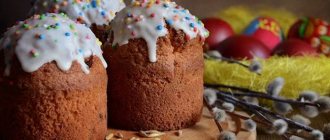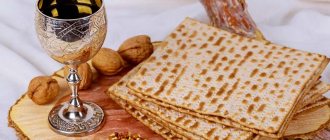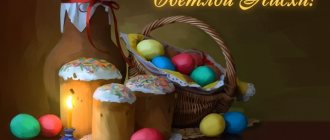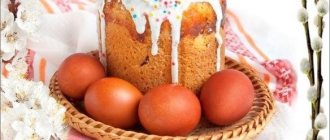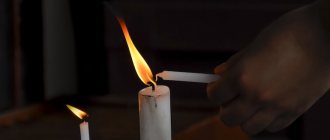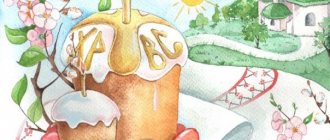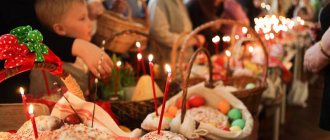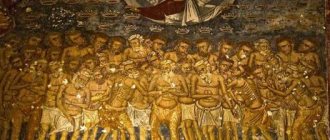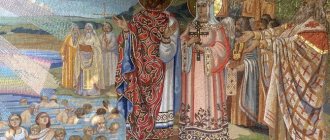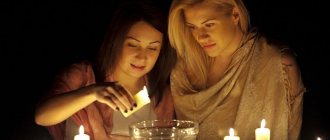In 2021, Easter, the most important Christian holiday, is celebrated on April 19. It takes 48 days to prepare for the Bright Resurrection of Christ: it lasts 40 days
Lent
and Holy Week are eight days long. Despite the significance of the holiday in the Christian world, it appeared long before the death and resurrection of Jesus. The editors of ivbg.ru explain where the Jewish Passover came from, how it is connected with Christian Easter, and why we paint eggs and bake Easter cakes on Easter
Photo: The Virgin Mary and the newborn Jesus Christ / tbn-tv.com
More about Easter
Easter is an amazing, bright holiday. It unites people, fills our souls with love, joy, the desire to forgive and share warmth with others. Easter is a great Orthodox holiday. On this day, Christians attend services where Easter cakes and colored eggs are illuminated. People are trying to free themselves from household chores and spend time with their loved ones. It is enough to meet this day consciously, with peace in your soul. And, of course, gather the family around a set table.
The holiday lasted throughout Bright Week, the table remained set, people were invited to the table and treated, especially to those who could not or did not have such an opportunity. Easter is the main holiday of the Christian calendar. It is not for nothing that it is called “the holiday of the holidays and the celebration of celebrations.”
EASTER 2021 – WHEN IS IT CELEBRATED?
| Celebrated: | in Russia, Ukraine, Belarus and other countries of the world |
| Other names: | Resurrection of Christ, Great Day |
| Church name: | Bright Resurrection of Christ. Easter |
| Meaning: | resurrection of jesus |
| Traditions: | worship services; procession around the temple; consecration of Easter cakes, colored eggs; greetings: “Christ is risen!” - “Truly risen!”; the singing of stoneflies; field trips |
The date of Orthodox Easter in 2021 is May 2
. This is the main event of the year for Orthodox Christians. The full church name of the holiday is the Bright Resurrection of Christ. The celebration is timed to coincide with the resurrection of Jesus Christ after the crucifixion. Catholics will celebrate the main Christian holiday almost a whole month earlier - on April 4, 2021.
Easter 2021 will therefore be quite late. Easter Sunday in Orthodoxy can fall on any date from April 4 to May 8 according to the new style. This means that in 2021 Easter falls almost at the very end of this date range.
REMINDER THAT EASTER DOES NOT HAVE A CONSTANT DATE, BECAUSE IT IS LINKED TO THE LUNIO-SOLAR CALENDAR.
Such a calendar takes into account both the movement of the Sun and the movement of the Moon across the sky. The lunar month is slightly shorter than the average month on the solar calendar. Over the course of a year, according to the lunar calendar, a lag from the solar calendar accumulates - about one and a half weeks. That is why new moons and full moons do not have constant dates from year to year.
How is the date of Easter determined?
The Easter holiday is precisely tied to one of the spring full moons. Namely, the first day after the vernal equinox (this day itself is around March 20). It would seem that this is a very simple rule. However, disputes about the date of Easter and the rules for calculating it according to this principle have not subsided for centuries. It is precisely because of different views on how the date of Easter is correctly calculated that Western and Eastern Christians most often celebrate their main holiday on different dates. In 2021, Catholics and Orthodox Christians celebrate Easter four weeks apart. Sometimes this gap can be even more than a month. The next year in which two Easters will be celebrated on one day is 2025.
Iconography
In Byzantine and Old Russian iconography, the moment of resurrection itself is not depicted, the description of which is not in the New Testament texts. For the Orthodox tradition, the canonical plot is related to the descent of Christ into hell and the liberation of the souls of the righteous and the first people. It is he who reflects the essence of the Christian teaching about victory over death.
Easter icons are conventionally divided into three types: “Anastasis”, “Descent into Hell” and “Resurrection of Christ”. The iconography of the image of “Anastasis” had developed by the 10th century: the icons depict Christ standing on two broken doors of the gates of hell, surrounded by souls whom he led from the underworld. In the 11th century, the image of “The Descent into Hell” appeared in Western European art, in which the Savior descends into a black abyss, stretching out his hands to the people there.
Less common is another type of icon - the “Resurrection of Christ”, borrowed from the Western European tradition of the 14th century. It depicts Christ emerging from an open burial cave with a banner in his hand. However, this plot is not canonical for the Russian Orthodox Church. Usually the image of Christ emerging from the tomb is an integral part of more complex compositions, which also include the plot of the Savior’s descent into hell.
The history of the Easter holiday
The holiday originated long before the birth of Christ. Passover was associated exclusively with the Jewish people. History says that the Jews were once held captive by the Egyptians. It was a difficult time for the people: bullying and oppression. Faith in God and hope for salvation and God's mercy always lived in their hearts.
One day a man named Moses came to the Jews, who and his brother were sent to their salvation. The Lord chose Moses to enlighten the Egyptian Pharaoh and deliver the Jewish people from slavery. But no matter how hard Moses tried to convince Pharaoh to let the people go, they were not given freedom. The Egyptian pharaoh and his people did not believe in God, worshiping only their own deities and relying on the help of sorcerers. To prove the existence and power of the Lord, nine terrible plagues were visited on the Egyptian people. No bloody rivers, no toads, no midges, no flies, no darkness, no thunder - none of this could have happened if the ruler had let the people and their cattle go. The last, tenth, plague, like the previous ones, punished Pharaoh and his people, but did not affect the Jews. Moses warned that each family should kill a one-year-old, virgin male lamb. Smear the doors of your houses with the blood of the animal, bake a lamb and eat it with the whole family. At night, all the first-born males in houses among people and animals were killed. Only the houses of the Jews, where there was a blood mark, were not affected by the disaster. This execution greatly frightened the pharaoh, and he released the slaves with all their herds. The Jews went to the sea, where the water opened up, and they calmly walked along the bottom. Pharaoh wanted to break his promise again and rushed after them, but the water swallowed him up. Since then, Easter has meant “passed by, passed by.”
A little more history
On the eve of the crucifixion, on Thursday, the Last Supper took place, where Jesus represented the bread as his body and the wine as his blood. Since then, the meaning of Easter has not changed, but the Eucharist has become the new Easter meal.
At first the holiday was weekly. Friday was a day of sorrow and the beginning of fasting, and Sunday was a day of joy.
In 325, at the First Ecumenical Council, the date for celebrating Easter was determined - on the first Sunday after the spring full moon. The Russian Orthodox Church uses the Julian calendar. To figure out what day Easter falls on in a certain year, you need to make a rather complex calculation. But for ordinary lay people, a calendar of holiday dates has been compiled for decades in advance.
Over the long period of existence of the holiday, it has acquired traditions, which are still followed in families, and signs.
Easter in the Old Testament
Jesus Christ was born to the Virgin Mary. At the age of 30, Jesus began preaching, telling people about the laws of God. But three years later he was crucified along with others disliked by the authorities on a cross that was installed on Mount Golgotha. This happened after the Jewish Passover, on Friday, which was later dubbed Passion. This event adds new meaning, traditions and attributes to the meaning of the Easter holiday. On the third day after the burial of Christ, early on Sunday morning, several women went to the tomb to bring incense intended for the body of Jesus. As they approached, they saw that the large stone blocking the entrance to the coffin had been rolled away, the coffin was empty, and the Angel of the Lord in snow-white robes was sitting on the stone. “Do not be afraid, for I know what you are looking for: Jesus crucified. He's not here. He has risen, as he said,” the Angel addressed the frightened women. With fear and joy, the women hastened to tell the Apostles about what they had seen. “And behold, Jesus met them and said: Rejoice! And they approached, grabbed His feet and worshiped Him. Then Jesus says to them: “Do not be afraid; go and tell my brothers that they go to Galilee, and there they will see me.” On the bright holiday of Easter, the Church calls on believers to see Christ shining with the impregnable light of the resurrection. A week before Easter, believers celebrate Palm Sunday.
Traditional Orthodox Easter came to Rus' along with baptism, and the people accepted the new God - Jesus Christ, transferring to him the functions of the Tsar-Maiden. But the traditions of the celebration remained the same. For a long time Easter looked like a pagan festival.
Easter or Easter Sunday
Jesus participated in the pending Passover of the Jews, completed it, and abolished it. The relationship between people and the Lord has changed. The transitory union of the Lord with a single people became “old,” that is, obsolete. Jesus replaced it with the eternal covenant God made with humanity. At the Last Supper, his dying Passover, Christ the Messiah performs actions and says phrases that change the meaning of the celebration.
Jesus took the place of Savior for the spiritual liberation of mankind once and for all. Jesus introduces the Eucharist, another Passover meal. He informs his apostolic disciples of his death as a new sacrifice.
What to do for Easter: traditions and modernity
So, for the holiday, or rather, on the eve of Easter Sunday, almost everyone paints eggs and buys Easter cakes. Of course, you can bake the baked goods yourself - after all, preparing for the holiday is also the holiday itself.
What else do they do for Easter? Whatever the date of this resurrection, in 2021 people will surely come into contact with many ancient traditions. Here are the most famous of them.
Lighting eggs and Easter cake
Of course, on such a day, believers strive to get to church and attend the all-night service, which takes place on the night from Saturday to Sunday. And even if this was not possible, they come to the temple to bless the eggs and Easter cake.
The tradition of consecration allows a person to tune in to the bright waves of the holiday. It is no secret that a special atmosphere develops in a gathering of believers, which can hardly be felt at home or even while watching a service broadcast on TV.
That is why you should definitely visit the temple on such a day. And it wouldn’t be superfluous to do a favor by treating those in need with eggs and Easter cakes.
Christening
Well, at home the holiday continues - moreover, here it is in full swing. In the morning you need to try to get up early, because the Savior rose in the morning. And the rising sun itself symbolizes the beginning of the celebration.
According to tradition, all those celebrating take Easter eggs and bow to Christ - i.e. They push eggs against each other and break the shell from either end - sharp or blunt. After this, you need to kiss the cheeks three times and say the well-known words:
"Christ is risen!"
“Truly risen!”
If you follow the church canon, the phrase will sound slightly different, which does not change its meaning at all:
Traditionally, people go to visit, treat Easter dishes to relatives, friends, neighbors and just everyone who is dear to their hearts. In this sense, it is very good that Easter is always celebrated on Sunday. We have the opportunity to remember and visit everyone who may have been waiting for our attention for a long time.
Other folk customs for Easter
Easter cake and eggs are the main symbols of the holiday, therefore Easter traditions are mainly associated with them:
- After visiting the church, you can buy several candles and decorate the Easter cake with them. Traditionally, one candle is placed in one pasochka, after which the fire is lit so that it brings joy to everyone in the house.
- You can arrange a pleasant holiday for everyone at home - and of course, don’t forget about the kids. For example, let them look for colored eggs that will be previously hidden in different places in the house. Have a fun search together.
- You can also organize “rolling games” - whose egg will roll the farthest.
- Traditionally, the house is decorated with greenery and emerging tree branches. In general, it is permissible to use all symbols that represent rebirth and good changes.
Old Testament celebration of Easter
The celebration of Passover (from the Hebrew verb: “Pesach” - “to pass”, meaning “to deliver”, “to spare”) lasted seven days. Every devout Jew had to spend this week in Jerusalem. During the holiday, only unleavened bread (matzo) was eaten in memory of the fact that the Jews’ exit from Egypt was very hasty, and they did not have time to leaven the bread, but took with them only unleavened bread.
Hence the second name of Passover - the Feast of Unleavened Bread. Each family brought a lamb to the Temple, which was slaughtered there according to a ritual specially described in the Law of Moses.
This lamb served as a prototype and reminder of the coming Savior. As the historian Josephus testifies, on Easter 70 A.D. 265 thousand young lambs and kids were slaughtered in the Jerusalem Temple.
The family had to bake the lamb, which was called Easter, and be sure to completely eat it in the evening on the first day of the holiday. This meal was the main event of the celebration.
Bitter herbs (in memory of the bitterness of slavery), a paste of fruits and nuts, and four glasses of wine were required. The father of the family was supposed to tell the story of the exodus of the Jews from Egyptian slavery at the festive dinner.
Easter symbols and ancient rituals associated with them
Easter fire, spring water of a stream, wreath, eggs, hares, Easter cakes - all these symbols of the Great Day have roots in the distant past. The Easter holiday itself embodies the ancient beliefs of different peoples. Water purifies and protects against illness and misfortune. The fact that on Maundy Thursday you need to wash yourself so as not to get sick for a whole year is the embodiment of ancient beliefs about the power of stream water.
Fire protected our ancestors from predatory animals and evil spirits; people lit fires to drive away winter and welcome spring faster. The Easter fire embodied the power of the hearth. The fire of a hot candle is, in the church sense, a symbol of the Resurrection.
The Easter wreath is the personification of eternal life. Even among ancient tribes, an egg symbolized a small miracle of birth, many nations have long considered hares a symbol of fertility and prosperity, and the prototypes of Easter cakes are babkas, which the Slavs have baked since time immemorial.
There are many customs associated with the egg. Our ancestors wrote prayers and magic spells on them, they laid them at the feet of the gods and asked them to send them prosperity and fertility. In the first Slavic cities, lovers gave colored eggs to each other in the spring, thus expressing their sympathy. And the favorite Easter entertainment in Rus' was rolling colored eggs.
In Russia, there has long been a tradition of making glass, wooden, chocolate, sugar eggs, as well as silver and gold eggs decorated with precious stones. Temples, icons, genre scenes, and landscapes were painted on Easter eggs.
Traditions of different countries
In every European country, the Bright Christian holiday has its own traditions. In Austria, Easter markets are held where they sell figurines of biblical characters made of wax, eggs and hares.
In Italy, observing the traditions of Orthodoxy, they celebrate Bright Sunday with their families.
Festive tables are bursting with Neapolitan pies (cazziello), sweet flatbreads, and roasted lambs. In Spain, during Holy Week, processions of repentant sinners are organized. People's faces are not visible; they wear caps with slits for their eyes.
Preparing for Easter: Holy Week by day
Lent is traditionally observed before Easter. It is the longest of the year - about 40 days. Fasting symbolizes Jesus' forty-day stay in the desert, where he prayed and was cleansed of sins. People also try to free themselves from burdens and sins in this way.
During Lent, it is forbidden to eat food of animal origin, have fun, get married, drink alcohol, succumb to negative emotions and make love. Also, during Lent you should not be lazy; you must treat any work responsibly.
Lent ends with Holy Week, which is considered the most difficult for the entire period of Lent. This week is special for believers, because each day symbolizes the last days of Jesus’ life and is accompanied by special rituals:
- On Monday you need to put your house in order: fix broken things, do general cleaning.
- On Tuesday you need to put all your clothes in order: give away unnecessary ones, wash and iron things, prepare an outfit for Sunday.
- On Wednesday you can begin preparing for the preparation of a traditional dish - Easter.
- Christians call Thursday Clean. On this day you need to take a bath before sunrise; it is believed that in this way you can cleanse yourself of sins. Also on this day you need to paint eggs and bake Easter cakes.
- On Good Friday you should completely give up food, any fun and work. This is a day of mourning when Christians remember all the sufferings of Jesus.
- On Holy Saturday it is customary to prepare dishes for the festive table. You should finish all your work early and relax before the night service in church.
Lent
Easter in Russia is one of the main holidays, even for those people who very rarely go to church. Today, in the era of high technology and urbanization, among generations who prefer the computer to face-to-face communication, the church is slowly losing its power over the hearts and souls of people. But almost everyone, regardless of age and strength of faith, knows what Lent is.
Older generations in families pass on traditions. Rarely does anyone decide to adhere to the entire fast; more often than not, only in the last week do people somehow follow the rules.
For 40 days, believers must eat without eating animal products (and on some days fasting is stricter), not drink alcohol, pray, confess, take communion, do good, and not slander.
Lent ends with Holy Week. The Easter service has a special meaning and scope. In modern Russia, services are broadcast live on central channels. In every church, even the smallest village, candles are lit all night and chants are sung. Millions of parishioners all over the country stay up all night, pray, attend services, light candles, and bless food and water. And fasting ends on Sunday, after all church rituals have been completed. Those who fast sit down at the table and celebrate Easter.
Easter Service
Holy Week ends with the great and one of the most important church holidays - Easter. On this day, all Christians must attend a church service, which begins at midnight and ends at dawn.
At the end of the solemn service, the priests carry the Holy Fire throughout the temple. Believers take it with them and carry it to the house, trying not to extinguish it. A lamp with fire is placed at the head of the table and they try to maintain it throughout the year, until the next holiday of Resurrection.
In addition, consecration is considered the main rite. At the end of the service, people gather around the church to bless Easter baskets with Easter cakes, eggs and meat.
Easter rituals and fortune telling
Fortune telling is considered the oldest ritual during Easter week. Although church rectors do not recommend doing this, still, both several centuries ago and today, many women and girls tried to find out their fate, attract a rich groom and predict family well-being.
Ritual for wealth at Easter
This ritual is the simplest, so you should not wait for the right moment to perform it. The ritual is performed immediately after the evening service, which is dedicated to Easter. To perform the ritual you need to stock up on:
- church candle
– a plate
– millet, sunflower seeds and bread crumbs (take a handful of all ingredients into a separate plate).
To perform the ceremony you need to stay in the room completely alone. You should light a candle, carefully peering into its burning flame. It is recommended to read the prayer that you know well from memory.
1. Place a plate in front of the candle. Take the cooked millet, pour it into a plate and say the words:
“Wheat grains, golden in the sun. The chickens peck at the grain, they will bring happiness and wealth to my house.”
2. Now take a handful of sunflower seeds from another plate, pour them into the plate with millet and say:
“Just as the seeds sprouted, reached for the sun and bore fruit, so wealth will find its way to me. The seed sprouts, happiness comes to me.”
3. Take a handful of bread crumbs, pour them into a plate, say the words:
“The rye is earing and growing. Life is extended, it goes on. Just as crumbs cannot turn into grain, so wealth cannot fight me off.”
4. Mix all the poured ingredients in a plate with your right hand and let the candle burn out until the end.
Now say the following words over a full plate:
“The bird pecks the grains, wealth calls to me. As soon as she eats all the treats, prosperity will come.”
Festive table for Easter
Along with the question of when Easter will be in 2021, people are often interested in what dishes will be right to put on the table. After all, the festive menu serves as a kind of culinary portrait of the celebration and allows you to enjoy the moment to the fullest.
In addition, with the onset of the holiday, Lent ends, which imposes the most stringent requirements for restrictions on food and drinks. And after such a long ordeal, the joy of the holiday only intensifies.
Traditionally, along with Easter cake, there are other baked goods on the table, as well as meat dishes:
- boiled pork;
- baked veal;
- wild duck stewed in sour cream;
- fresh salads and slices;
- all kinds of pies, kulebyaki, sweet baked goods.
As for the holiday drink, red wine is rightfully considered to be it. It is preferable to prepare in advance and purchase a church horse. It’s even more interesting if you make red wine yourself. It can be prepared almost a year in advance, but the wait only enhances the pleasure.
Meaning for Christians
The meaning of this religious holiday is eternal life. By His resurrection, Christ gave it to his followers. It was first celebrated 2000 years ago. Easter celebrates the resurrection of Christ. It means:
- liberation from death;
- acquisition of the spiritual world.
The Russian people, along with church rituals, have acquired many superstitions, customs, and traditions associated with the days of celebrating Easter Sunday.
